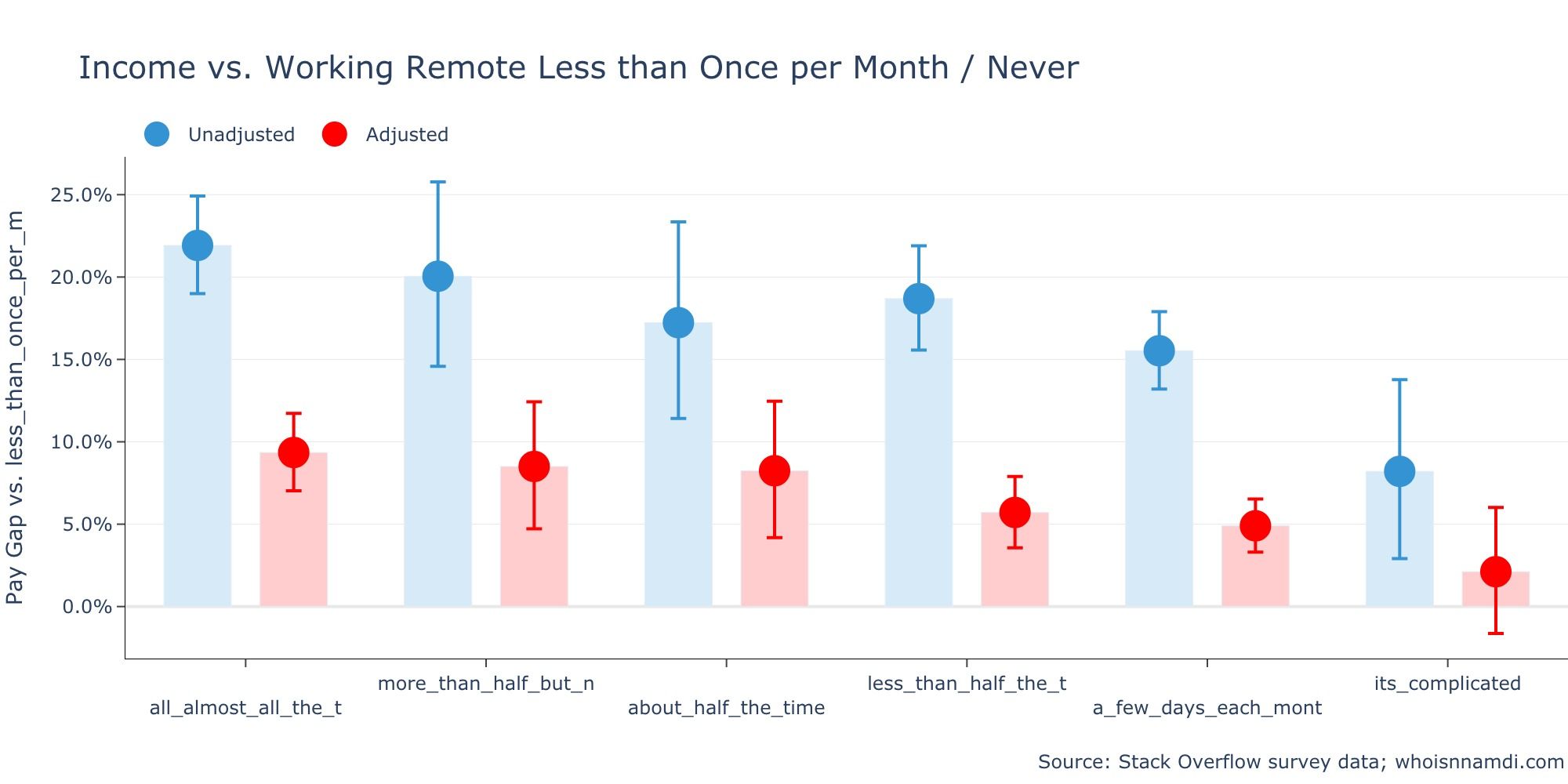This post is an excerpt from my 2020 software developer pay analysis. Read the rest of the analysis here.
Organizations around the world have pivoted to remote work to shield themselves against the novel coronavirus / COVID-19 threat.
The sudden change prompts numerous questions. To start, how will this new (for some but not all) paradigm affect the way we work and collaborate?
One piece of good news among all the dread—remote work could lead to higher take-home pay, at least for software engineers.
Remote work pays
Fully-remote software developers earn 21.9% more than developers who never or rarely work remote.
Even once I control for various observable factors (including age, experience, hours worked, size of employer, programming languages, and more), fully-remote software developers earn 9.4% more than developers who never or only rarely work remotely.
Further, the remote work pay advantage increases proportionately with the time spent working remotely. Therefore, fully-remote developers earn more than
- those who work remotely more than half the time, who earn more than
- those who work remotely roughly half the time, who earn more than
- those who work remotely less than half the time.
Even working only a few days each month yields a substantial pay advantage of 15.5% on average and 4.9% controlling for observable factors, and the estimates are quite precise.
In other words, half or more of the benefit comes from being able to work remotely at least a small portion of the time (vs. not at all), while the remainder comes from increased remote time, maxing out at fully-remote.
This is an impressive result.
While I can’t be sure this is causal, the large apparent effects (even after controlling for other variables) paired with the clear upward trend as remote work increases gives me confidence there is something real here.
Receive a report with the full results
Wait but why?
The obvious next question is… why?
Hard to say—by definition the adjusted pay premium already controls for any other data I had access to.
However, I can show how the other factors contribute to the explainable premium (i.e. the gap between the unadjusted and adjusted pay premium):
Here we can see some of the other factors contributing to the pay advantage for fully-remote developers:
years of professional coding experience,age,- and a variable that proxies for the
influencea developer has within their organization (their decision making power over new technology purchases)
Combined with other confounding variables, these account for 12.5 percentage points of the 21.9 percentage point pay advantage.
Much of the apparent premium earned by remote developers is in fact driven by seniority and tenure. These are older, more experienced developers who either prefer to work remote or whose organizations grant them that privilege.
That said, the remaining 9.4% adjusted pay advantage for fully-remote developers is nothing to scoff at. The other variables cannot explain this meaningful earnings bump.
This one weird trick
I find an economically and statistically significant pay premium for remote developers, even those who are only away from the office a few days each month. In fact, most of the earnings gains come from this initial foray into remote work, while the rest come with additional hours spent away from the office.
Would this hold in a world where remote work is more the norm than the exception? No idea.
Does this apply to non-software developers? Again, can’t say.
But it’s an interesting result nonetheless, and one that deserves further investigation as more knowledge workers shift their work online and away from the corporate office—virus or no virus.



